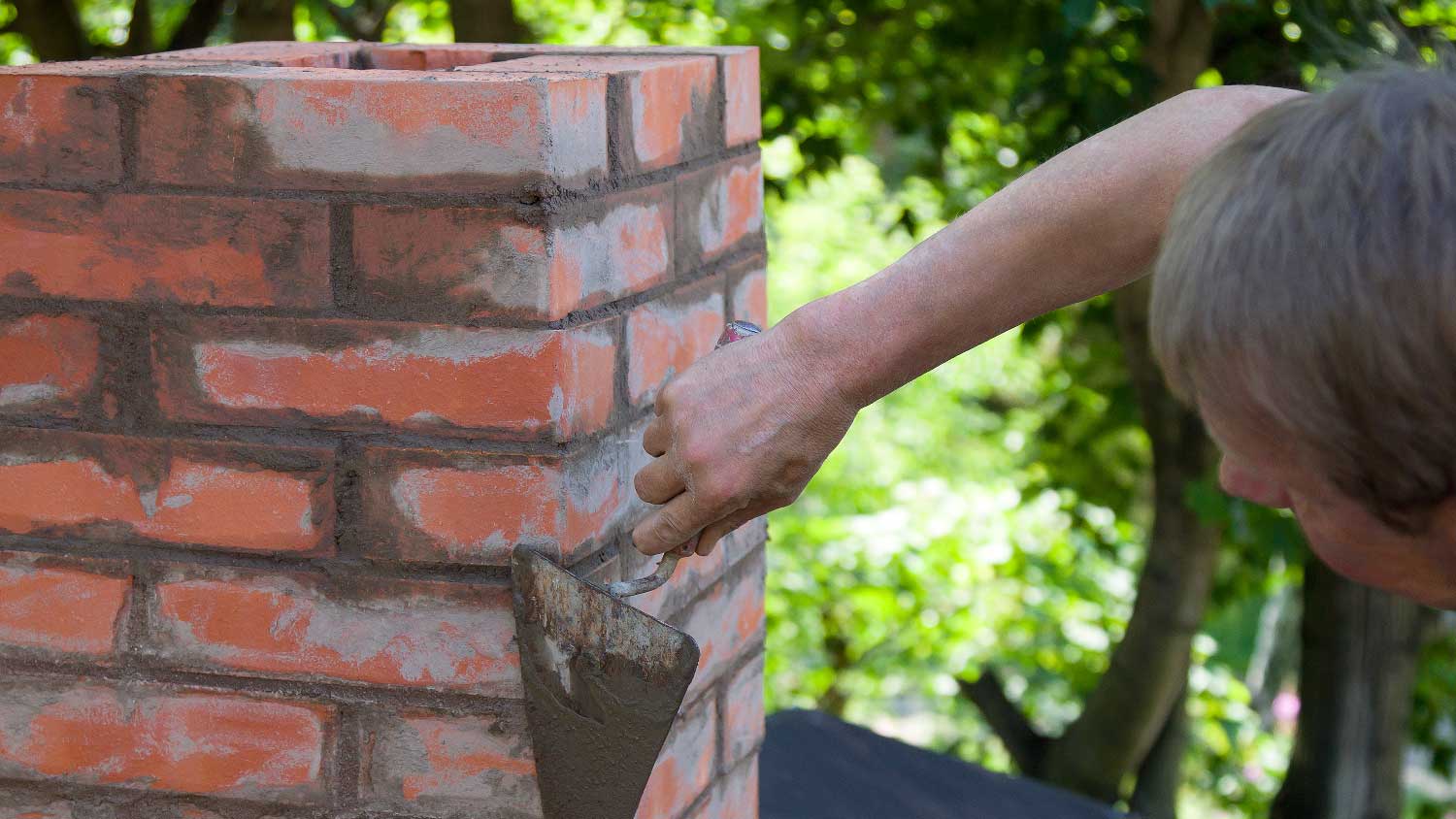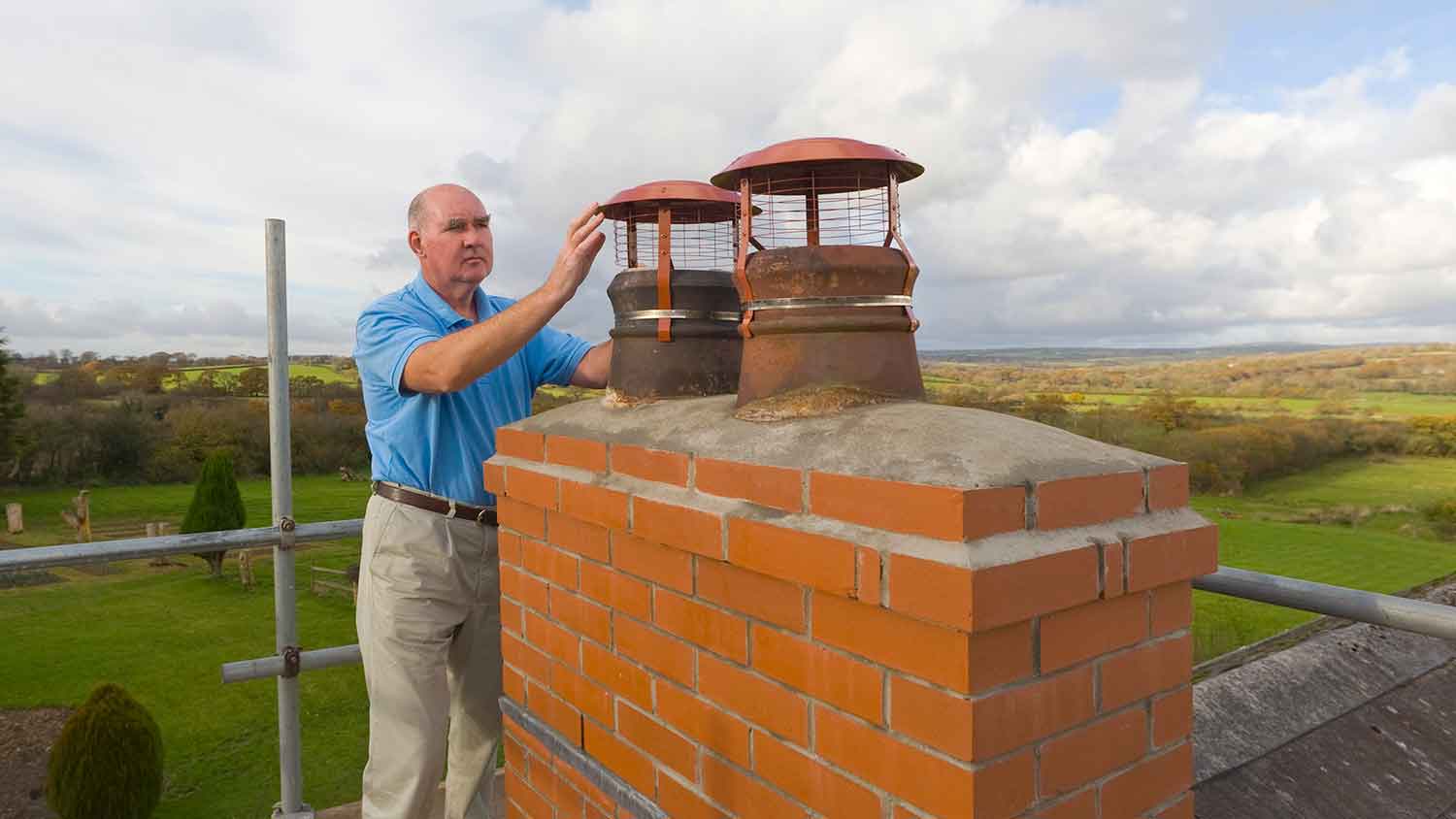
Discover the average chimney tuckpointing cost, key price factors, and expert tips to help you budget and save on your next chimney repair project.
Learn what inspectors look for to prepare for your next chimney check-up


A thorough chimney inspection is important to your home’s safety—it ensures your fireplace operates efficiently while minimizing potential hazards. The cost of a professional chimney inspection can range from $100 to $300. If additional services like a chimney sweep or repairs are needed, the cost may increase.
After you book a chimney inspector, use this comprehensive checklist that covers all the essential aspects of chimney inspection so you can follow along with the professionals. Then, dive into the ins and outs of chimney inspection costs due to additional factors as well as the pros and cons of doing the inspection yourself. With this checklist, you’ll have a safe and secure fireplace in no time.

A chimney inspection allows professional inspectors to carefully examine your chimney's integrity and safety. A certified inspector assesses key components like:
Flue liners
Chimney structure
Damper
Masonry for wear, damage, or obstructions
Creosote buildup, which is a fire hazard
The findings determine the maintenance and repairs needed to restore your chimney to a safe and efficient structure.
The National Fire Protection Association outlines three levels of chimney inspections. The levels differ in how detailed they are and when they’re commonly used.
A Level 1 inspection is the most common kind of inspection. It consists of a visual assessment to confirm that the chimney is structurally sound and free of obstructions like debris or creosote. If your fireplace is regularly used and functioning well, you’ll likely receive a Level 1 inspection.
A Level 2 inspection includes everything in a Level 1 inspection and adds a check of the basement, attic, or crawl space, plus a more in-depth inspection—often using a camera—of the fireplace, flue, venting, and more. A Level 2 inspection is often required when buying or selling a house.
A Level 3 inspection is necessary if a lower-level inspection indicates damage or defects that may require repair. These detailed inspections may involve removing parts of interior walls or portions of the chimney structure itself for better access to the entire chimney.

Routine chimney inspections that follow the steps below will help guarantee that your fireplace and chimney are safe, efficient, and consistent, providing warmth and comfort when you need it.
You can use this list to perform an initial DIY assessment, and then to follow along with the chimney inspector so you know what to point out as you watch them work.
See if you can determine your specific chimney type and the materials in use, or ask your inspector when they come about the type of chimney you have. As you look around the outside and inside of your fireplace and chimney, take note of any areas of concern.
Once you identify your chimney type, your inspector can pick the most suitable approach for a thorough inspection. Ask about any red flags you found and their potential impact on chimney safety and performance.
Before your inspection, look closely at the outside of your fireplace and chimney for any visible damage, cracks, or signs of loose bricks. When the inspector arrives, ensure they thoroughly examine these critical areas, as well, and discuss anything you’ve noticed.
Take a look inside your fireplace, up into the chimney, and see if you can see any cracks or deterioration.
The inspector will examine the flue liners for any cracks, signs of deterioration, or indications of creosote buildup. Inquire about the necessary actions to address any issues found.
Your chimney inspector will test the damper mechanism to ensure it effectively opens, closes, and seals properly.
Talk to your inspector to learn the importance of a well-functioning damper for chimney safety and efficiency, and ask about any necessary adjustments or repairs if issues are detected.
Focus on the airflow within the chimney. The inspector will check for any blockages or obstructions that could hinder proper airflow. This is another area where it’s important to know the impact of unobstructed airflow on chimney performance and safety, so you can inquire about how to address any identified issues.
Your inspector will assess the chimney for creosote buildup. It can often look like hard, black flakes that resemble tar. Ask about the recommended actions if there's notable creosote accumulation and how to prevent potential risks in the future.
Focus on the firebox and grate. Look for any signs of wear, cracks, or corrosion in these critical components. Talk with your inspector about the necessary steps to address any identified issues for optimal fireplace functionality and safety.
Examine the chimney cap and crown for any signs of damage, cracks, or indications of water intrusion. It’s best to wait for an inspector to arrive to do a thorough inspection since you’ll have to access the roof to get a good look. After they’ve looked at the chimney cap and crown, ask how any issues can affect the chimney's integrity and safety.
Regular inspections are vital to prevent potential risks and ensure optimal chimney performance—especially before the cold season. Beyond safety, there are several other advantages to having a thorough chimney inspection.
| Benefit | What Inspectors Catch |
|---|---|
| Safety assurance | Identify and mitigate potential fire hazards, creosote buildup, and structural weaknesses |
| Efficient performance | Enhance your fireplace's efficiency by addressing draft problems and blockages, which will optimize heat output and energy usage |
| Cost-effective maintenance | Detect issues early on which prevents expensive repairs later and avoids significant chimney reconstruction or replacements |
| Regulatory compliance | Ensure your chimney complies with local building codes and safety standards |
| Prolonged lifespan | Regular inspections and timely repairs prevent extensive damage, extending the life of your chimney and preserving its functionality |
Even though performing your own chimney inspection is possible, particularly if you just want a basic visual assessment, opting for a professional chimney inspection at least once a year is advisable.
A professional who does chimney inspections possesses the expertise and tools to conduct thorough inspections and identify potential hazards that might go unnoticed in a DIY attempt. Their training ensures a comprehensive evaluation, providing peace of mind that takes the worry out of your warm and cozy winter fire.
If an inspection uncovers a chimney problem, the same pros who inspect your chimney are often the ones to call for chimney repairs. Chimney repair costs an average of $160 to $750, and it’s always better and more cost-effective to catch a problem early and repair it before it becomes a serious safety risk.
From average costs to expert advice, get all the answers you need to get your job done.

Discover the average chimney tuckpointing cost, key price factors, and expert tips to help you budget and save on your next chimney repair project.

Chimney repair costs can vary by the type of chimney you have and the required repairs. Use this guide to help you estimate project costs.

Chimney liners are important for fire safety and energy efficiency in your home. Learn how much chimney liners cost based on type, size, material, and other factors.

Learn how to clear a blocked flue to decide if you have the skill and the gear to tackle the task or if it’s best left to the professionals.

If you own a fireplace, learning how to open and close your chimney flue ensures you allow smoke out of your home when it’s in use and stay warm when it’s not.

Cracks in your chimney crown will grow over time and cause serious structural problems. Learn how to repair a chimney crown and prolong your chimney’s lifespan.